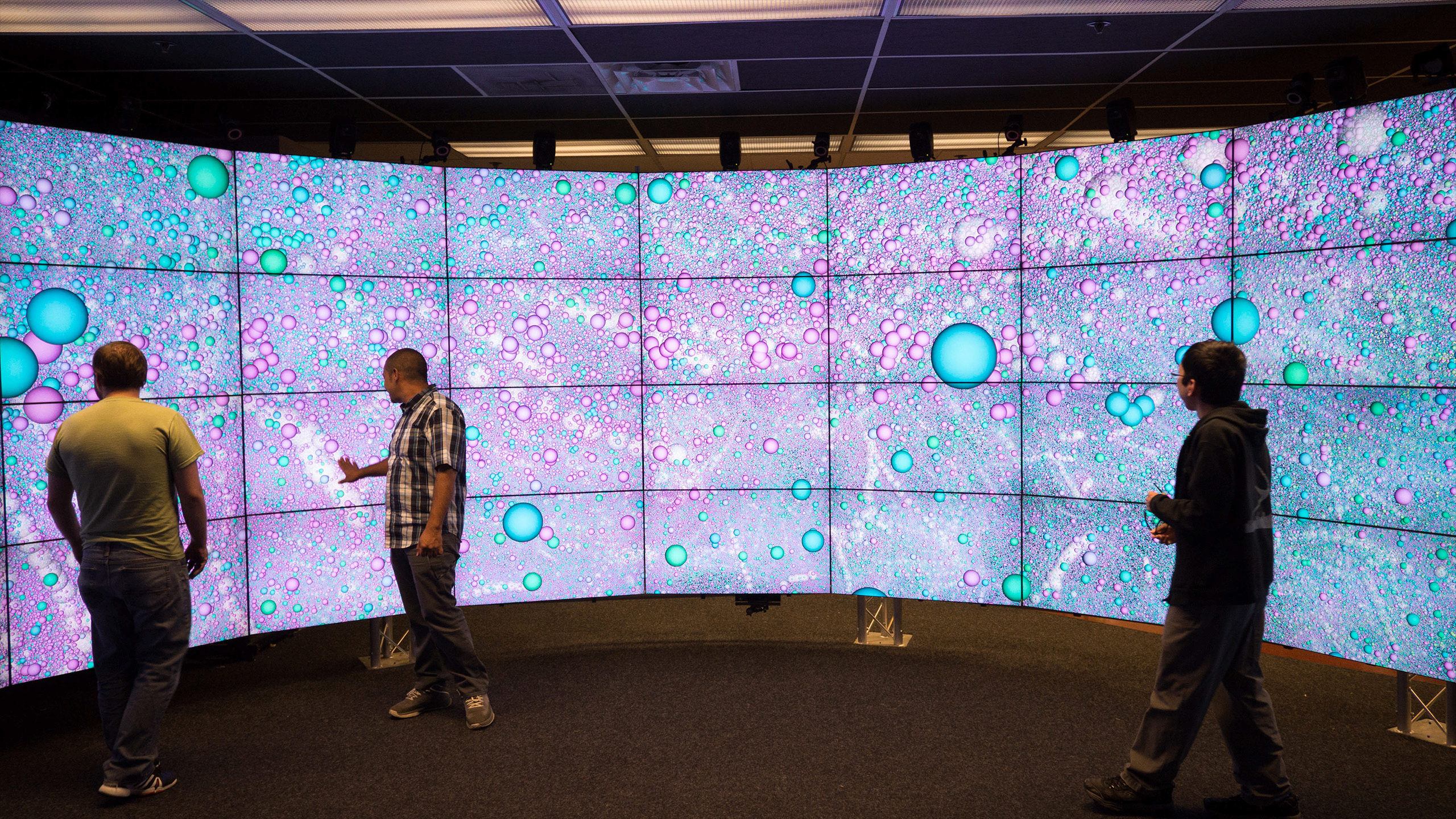Immersive Analytics Lessons from the Electronic Visualization Laboratory: a 25 Year Perspective
May 1st, 2019
Categories: Devices, Human Factors, Software, User Groups, Visualization, VR, Visual Analytics, Visual Informatics, Human Computer Interaction (HCI), Instrumentation

Authors
Marai, G.E., Leigh, J. , Johnson, A.E.About
This article provides a 25 year-long perspective on Immersive Analytics through the lens of first-in-kind technological advancements introduced at the Electronic Visualization Laboratory, University of Illinois at Chicago, along with the challenges and lessons learned from multiple Immersive Analytics projects.
The Electronic Visualization Lab (EVL) at the University of Illinois at Chicago has been at the forefront of Virtual Reality research since 1992, when it introduced the CAVE™ Automatic Virtual Environment, the first projection-based virtual reality system in the world. Since then, the lab has developed a wide range of immersive systems and technologies to be used for visualization and visual analysis tasks, such as PARIS™, ImmersaDesk™, CAVE2™, and SAGE2™. These technologies paved the way for the resurgence in virtual reality in the past few years, and lead to the introduction of Immersive Analytics - which investigates how new interaction
and display technologies can be used to support analytical reasoning by immersing the users in data.
Resources
URL
Citation
Marai, G.E., Leigh, J. , Johnson, A.E., Immersive Analytics Lessons from the Electronic Visualization Laboratory: a 25 Year Perspective, IEEE Computer Graphics and Applications, vol 39, no 3, pp. 54-66, May 1st, 2019. https://dx.doi.org/10.1109/MCG.2019.2901428